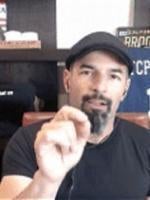Ok, this kind of feels like small potatoes with the big SCOTUS CFPB ruling today and with a ruling in Barr a day away (I’m not even moving my webinar folks–that’s how confident I am we get an opinion tomorrow.) Nonetheless, this new FCC ruling on call blocking demands our attention because it is really important and may set the stage for life in the post-TCPA world.
In the age of the FCC’s technological approach to defeating unwanted robocalls—which has had a remarkable success rate—a major concern for legitimate businesses in this country is whether their wanted calls might be inappropriately blocked by overly-aggressive carrier spam filters. And while carriers have long-asked for a safeharbor from the FCC for liability under the Communications Act for blocking calls, callers have—rightly—requested assurances that any carriers offer a redress mechanism to address claims that specific calls are being blocked improperly.
Well in a new ruling issued last Friday the FCC appears to have done both.
The ruling—available here TCPAWorld– Call Blocking Ruling—creates two safeharbors for carriers. As the FCC describes it:
-
The first is a call-by-call safe harbor based on reasonable analytics including caller ID authentication information. This safe harbor is critical to terminating providers who have told us that “absent a broad safe harbor, voice providers face a real risk of liability for taking action to protect consumers from illegal and unwanted calls.”
-
The second safe harbor targets bad-actor upstream voice service providers who, whether through negligence or intent, do not police their networks to minimize bad traffic.
Per the FCC: “Taken together, these safe harbors will incentivize all voice service providers to stop not just the individual calls consumers detest, but also the bad-actor upstream voice service providers that have failed to police their networks when provided with reliable information about the likely use of those networks for illegal.”
Of interest, the language related to ID authentication information does not mean the “reasonable analytics” safeharbor is limited to calls that are themselves transmitted using fraudulent caller IDs. Rather, “[t]o avail themselves of the safe harbor, terminating voice service providers must incorporate caller ID authentication information into their reasonable analytics programs.” In other words, the programs themselves must include a SHAKEN/STIR component but the safeharbor is not limited to calls that violate SHAKEN/STIR. Make sense?
The second safeharbor is arguably even broader and is very interesting. Rather than focus on specific calls, this safeharbor allows one carrier to entirely refuse to accept calls from another carrier altogether. This rule seems designed, almost by necessity, to stop both wanted and unwanted calls being carried on the blocked-carrier’s network.
Notably, however, it appears this safeharbor only comes into play where the blocked carrier was first “notified that it is carrying bad traffic by the Commission” and “fails to effectively mitigate such traffic or fails to implement effective measures to prevent new and renewing customers from using its network to originate illegal calls.” While the ruling is clear that the upstream carrier has 48 hours to respond to the FCC or face call blocking, it remains to be seen what “effective mitigate[ation]” of such traffic actually means. The FCC does suggest, however, that the upstream carrier must determine “the source of the traffic and prevent[] that source from continuing to originate such traffic” and “implement effective safeguards to prevent new and renewing customers from using their network as a platform to originate illegal calls.”
Interesting stuff.
Obviously if you’re a carrier that receives a notice from the FCC you’ll want to act fast, and effectively, to avoid your traffic being shut down completely.
For callers, on the other hand, this is the critical language of the ruling:
We require that any voice service provider that blocks calls must designate a single point of contact for callers, as well as other voice service providers, to report blocking errors at no charge to callers or other voice service providers. Blocking providers must investigate and resolve these blocking disputes in a reasonable amount of time that is consistent with industry best practice. What amount of time is “reasonable” may vary depending on the specific circumstances of the blocking and the resolution of the blocking dispute. Blocking providers must also publish contact information clearly and conspicuously on their public-facing websites. We further require that when a caller makes a credible claim of erroneous blocking and the voice service provider determines that the calls should not have been blocked, a voice service provider must promptly cease blocking calls from that number unless circumstances change.
For more background be sure to check out our huge podcast interview with FCC Commissioner O’Rielly and our interview with US Telecom chief Patrick Halley. In both interviews we discuss the carrier call blocking safeharbor and redress mechanisms that have now found fruition in the FCC’s new ruling. Love being ahead of the curve on this stuff for you.
We’ll keep a close eye on all of this.




 />i
/>i

